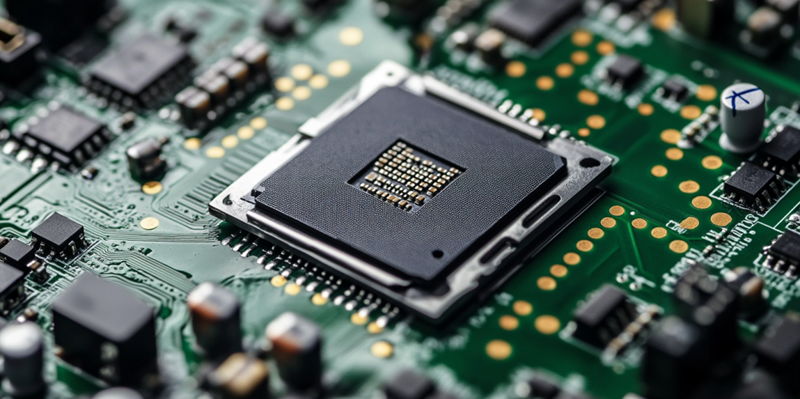AMD’s noteworthy achievements in the third quarter of 2024 have captured the attention of the technology industry, driven by significant growth in their EPYC and Ryzen CPUs built on x86 architecture. The latest statistics from Mercury Research highlight AMD’s robust performance across server, desktop, and mobile segments, marking a period of remarkable expansion for the company. AMD’s continuous gains in market share and revenue underscore the company’s strategic advancements and innovative product portfolio, positioning it as a formidable competitor against Intel.
Server Market Success
EPYC CPU Growth
In Q3 2024, AMD’s server revenue share increased by an impressive 2.7% year-over-year (Y/Y) and 0.1% quarter-over-quarter (Q/Q), reaching a record high of 33.9%. This growth is accompanied by a 0.9% increase in server unit share Y/Y and a slight 0.1% rise Q/Q. These figures demonstrate AMD’s successful penetration into the server market, largely driven by the EPYC processors’ performance and efficiency. The introduction of the EPYC 9005 “Turin” family in this quarter played a significant role in enhancing AMD’s appeal among enterprise customers, promising future gains.
The EPYC 9005 “Turin” family has been particularly disruptive in the server market due to its innovative architecture that combines high performance with energy efficiency. These capabilities cater to the growing demand for more powerful yet eco-friendly server solutions. AMD’s strategic focus on expanding its server lineup has paid off, as evidenced by the steady increase in market share and revenue. The company’s ability to address the needs of data centers and cloud service providers has solidified its position in the server segment, making it a preferred choice over Intel.
Client and Desktop Performance
AMD’s client revenue share saw a notable increase, rising by 1.5% Y/Y and 3.7% Q/Q to reach 21.7%. This growth is reflective of the company’s strategic efforts to diversify its client offerings and capture a broader market segment. Similarly, the client unit share experienced significant gains, increasing by 4.6% Y/Y and 2.9% Q/Q. The expanding portfolio of Ryzen CPUs has been central to this success, offering consumers a range of options from entry-level to high-end models.
In the desktop market, AMD’s unit share surged from 19.2% in 2023 to an impressive 28.7% in Q3 2024. This substantial growth of 9.6% Y/Y and 5.7% Q/Q highlights the increasing popularity of AMD’s products among desktop users. The widespread adoption of Ryzen processors, particularly the high-performance Ryzen X3D models, has fueled this market share expansion. These models have become global bestsellers, known for their exceptional performance and value for money, thereby attracting a diverse user base.
Mobile Segment and Future Prospects
Ryzen AI and Mobile Gains
In the mobile segment, AMD achieved a unit share gain of 2.8% Y/Y and 2.0% Q/Q, reflecting the growing consumer demand for Ryzen-powered laptops and mobile devices. The revenue gains were equally significant, with a 22.3% increase Y/Y and 19.2% Q/Q, up from 20.3% and 17.7% in Q2 2024, respectively. The strong performance of Ryzen AI 300 APUs has been pivotal in driving these gains, particularly in gaming handhelds and high-performance laptops.
The Ryzen AI 300 APUs have been well-received due to their advanced AI capabilities and enhanced gaming performance, making them popular among gamers and tech enthusiasts. These processors have set new benchmarks for mobile computing, offering powerful performance that rivals traditional desktop setups. Despite the challenges in availability, the demand for Ryzen AI chips continues to grow, anticipating even higher adoption rates as more laptops featuring these processors hit the market.
Addressing Availability Challenges
One of the key challenges AMD faces with its Ryzen AI chips is availability, with a limited number of laptops currently featuring these powerful processors. However, this issue is expected to resolve in the coming months, with more mobile options anticipated to be showcased at CES 2025. The increased availability of Ryzen AI-powered laptops will likely further consolidate AMD’s position in the mobile segment, enabling the company to capture an even larger market share.
Looking ahead, AMD’s focus on innovation and performance optimization positions it well for continued growth. The imminent release of new Ryzen models, such as the Ryzen 9000 and 9800X3D, promises to sustain the momentum and attract more customers. AMD’s ability to stay ahead of technological advancements and deliver value to consumers and enterprises alike will be crucial in its pursuit of a 50% market share in the x86 segment.
Conclusion
AMD has made significant strides in the third quarter of 2024, gaining considerable attention from the technology sector. This progress is largely driven by the substantial growth of their EPYC and Ryzen processors, which are built on x86 architecture. Recent data from Mercury Research indicates a strong performance by AMD across server, desktop, and mobile markets, showcasing a period of impressive expansion for the company.
These gains paint a picture of a company that is strategically advancing and continually innovating within its product lineup. AMD’s share of the market and its revenue have seen consistent growth, making it a formidable competitor to Intel. The latest achievements position AMD not just as a follower, but a leader in the industry, compelling Intel to step up its game.
With a consistent focus on enhancing product performance and efficiency, AMD has made waves that challenge the status quo. This momentum is a testament to their robust strategy and relentless innovation, providing a clear signal to competitors in the tech industry that AMD is a force to be reckoned with.

